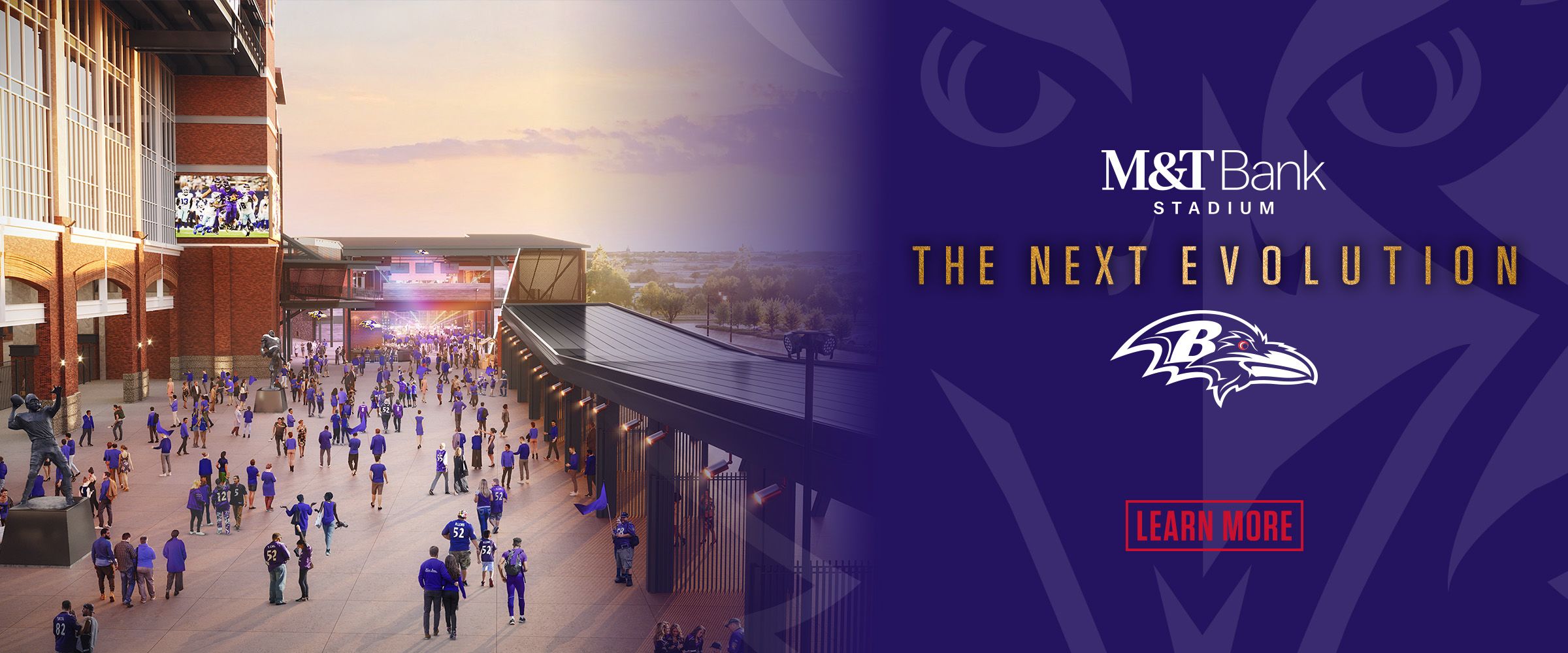Ravens Can't Use Veteran Signings as an Excuse to Pass on WRs Early in Draft
Even with three new veteran wide receivers on the roster – assuming the New Orleans Saints don’t match restricted free-agent Willie Snead's signed offer sheet – some are saying the Ravens must still target wide receivers in this weekend's draft … EARLY.
Yes, the Ravens' major holes have been filled at the position with tough veteran Michael Crabtree and speedy John "Smokey" Brown starting on the wings, and Snead in the slot. However, building for the future through the draft is still a necessity, says The Baltimore Sun's Jeff Zrebiec.
Zrebiec's logic behind continued investment in the position is three-fold:
First, the new additions were all brought to Baltimore on short-term deals. Brown's contract is for one year. Crabtree and Snead's are both for two years, but Crabtree's is structured for the Ravens to part ways after one year if needed. Breshad Perriman, the Ravens' 2015 first-round draft pick, is entering the final year of his rookie contract.
So, basically, Baltimore could find itself in a complete rebuild mode once again at this time next year if it doesn't use at least one high-end draft pick on a receiver.
Second, all three veteran additions are coming off down years and the Ravens are gambling that they'll rebound. Crabtree only gained 618 receiving yards last season after surpassing the 1,000-yard mark in 2016. Both Brown and Snead gained more than 1,500 yards in 2015-16, but failed to reach 300 last year.
Perhaps one or two of them will return to form, but will all three?
Third, while the rebuilt receiving corps appears on paper to be an upgrade over last year's group, Zrebiec isn't convinced the improvement is significant. At least, not without one or two high-quality rookies added to the mix.
This doesn't mean the Ravens must use their 16th-overall pick on a wide receiver, but Zrebiec likes the idea of grabbing one in either the first or second round, and then another in the fourth or fifth.
He wants to get away from the Ravens' recent formula of signing an aging veteran as a "band-aid" solution. While Baltimore has struggled to draft and develop wide receivers, Zrebiec says that can't mean the team "waives the white flag."
"If Baltimore is serious about setting Joe Flacco up for success, this current group of pass catchers isn’t a complete solution," wrote Baltimore Beatdown's Jacob Louque. "To round things out, they'll need to look to the draft.
"Honestly, at this point, their specific approach isn't important. What they need to do is use their first few picks to get as much help for Flacco as possible, whether it is keeping [him] upright, or drafting targets. Targets could be wide receivers, tight ends, or even the right type of running back."
Saints Not Planning to Match Willie Snead Offer; Ravens Expected to Move on From Dez Bryant
The Ravens' offer sheet signed by Snead is for two years and $7 million, with another $3.4 million in incentives, according to ESPN's Adam Schefter. It also includes a $2 million signing bonus.
Based on that information, Russell Street Report's Brian McFarland anticipates a $2 or $3 million cap hit for Snead in 2018, assuming the Saints won't match. And it's not expected that they will.
The Saints have until Wednesday to match the deal.
Once Snead is officially a Raven, NFL Network's Ian Rapoport says it will close the door on former Dallas Cowboys wide receiver Dez Bryant coming to Baltimore.
"It does take the Ravens out of the running for Dez Bryant, assuming the Saints don't match, which it certainly seems unlikely considering they added Cameron Meredith," Rapoport said in the video below. "Willie Snead would be their fourth receiver, and you usually don't pay $3 million-plus to your fourth receiver.
"So this would take one of the main suitors for Dez Bryant – a team that seemed to be the most interested than anyone else – off the table for him. So then, who really steps in? Are the Saints that team? I just don't know at this point where Dez is going to get the money he desires."
NFL Network's Mike Garafolo believes somebody will eventually step up and sign Bryant, but it may happen after the draft. Bryant wait have to wait and see which teams fail to draft receivers they were targeting.
"Snead is a different kind of receiver [than Bryant], so that really tells me that the Ravens' interest in Dez wasn't really that strong," Garafolo said.
Mike Mayock Changes His Top-Ranked Receiver From Calvin Ridley to D.J. Moore
The stock on Maryland wide receiver D.J. Moore continues to soar.
When NFL Network draft guru Mike Mayock published in February his first edition of position draft rankings, Moore was listed at No. 5, tied with three other receivers. After a standout performance at the NFL Scouting Combine, Mayock pushed Moore to No. 2.
And now, less than a week before the draft, Moore sits atop Moyock's list of wide receivers, knocking off Alabama's Calvin Ridley.
1. DJ Moore, Maryland
2. Calvin Ridley, Alabama
3. Courtland Sutton, SMU
4. Christian Kirk, Texas A&M
T-5. James Washington, Oklahoma State
T-5. Anthony Miller, Memphis
Rise: Moore (2), Sutton (4), Washington (NR)
Fall: Ridley (1), Kirk (3), Sutton (3), DJ Chark, LSU (T-5)
Watch Out for 'One-Sided Trades' in First Round of Draft
We hear over and over … and over … that the Ravens should strongly consider trading back Thursday night to accumulate picks in a draft that's defined by its depth and lack of star power.
The problem is that all teams are working off that same perception, so if the Ravens, or another team, trade back, they may do so without acquiring much in return.
"There will be some trades in this draft that might seem one-sided," wrote Monday Morning Quarterback's Peter King. "Several team officials told me in the past few days that they value Day 2 picks (rounds two and three) so highly that they'd be willing to take slightly less in compensation to move down. Where could this come into play? Cleveland (four), Indianapolis (six), Baltimore (16), Seattle (18), New England (23, 31), New Orleans (27), Philadelphia (32)."
"This is not your typical draft," one club official told King. "The second, third and even fourth rounds are gold. You can take less than the trade-value chart says and still make a very good trade if you get multiple picks in those rounds."
Mel Kiper and Todd McShay's Three-Round Mock Draft
ESPN draft analysts Mel Kiper and Todd McShay alternated picks in a three-round mock draft, and here's who they came up with for Baltimore.
Round: 1 D.J. Moore, WR, Maryland
"Not getting the No. 1 pick was worth it, just to take Kiper's favorite wide receiver for his favorite team. Moore is a speedster who would give Joe Flacco another weapon on the outside."
Round 2: Orlando Brown, OT, Oklahoma
"Brown couldn't have had a worse pro day, but there is a lot of raw talent here. He's worth the gamble in the middle of Round 2."
Round 3: Jordan Akins, TE, UCF
"We went all offense for Baltimore, and the 26-year-old Akins now goes in the third round -- just like he did in the MLB draft in 2010."
Quick Hits



















